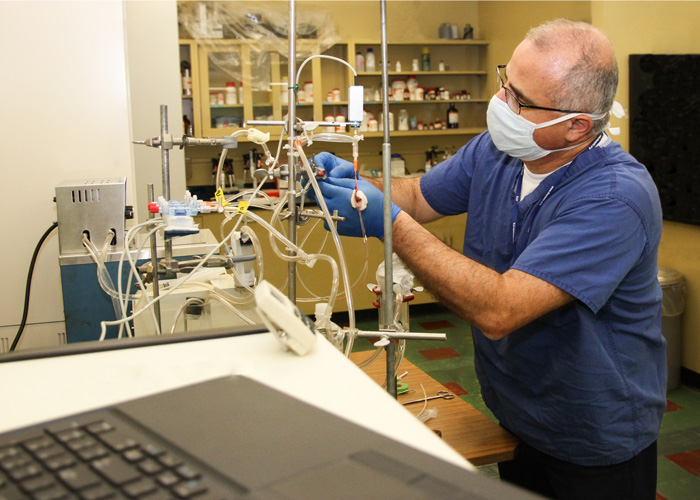Attenuation Characteristics of Military Boots
Defense Date: April 7, 2025
This study evaluated commercially available military-style boots permitted for use in combat, against a military-issued boot. Testing simulated high-dynamic foot-loading scenarios using two anthropomorphic test devices (ATDs): Hybrid-III-50% (HIII) and Mil-Lx. The goal was to assess differences in force attenuation measurements.
The commercially available boots were evaluated with both ATDs, while the military-issued boot was assessed with the Mil-Lx, with HIII data references from prior studies. All boots underwent pendulum impacts to the plantar surface of the boot, generating an axial force along the tibia axis, across a five-condition test matrix. The repeatability protocol ensured that neither the boots nor ATDs sustained damage, aligning with previous studies. Test conditions varied by pendulum mass (3.38–6.66 kg), velocity (4.75–10.0 m/s), and energy input (42–300 J). Results were compared to barefoot impacts with each leg.
The Mil-Lx ATD results indicated that while each boot demonstrated various levels of peak force attenuation across five conditions, the differences were not significant (p>0.05). Conversely, the commercially available boots assessed with the HIII exhibited significantly different attenuation values (p<0.05). The two ATDs also recorded significantly different attenuation values (p<0.05). HIII attenuations were more closely related to impact velocity while Mil-Lx attenuations aligned with pendulum mass.
To investigate these trends, a lumped parameter model of the Mil-Lx ATD was developed to characterize the mechanical properties of its compliant element. The model provides insight into the surrogate tibia’s spring and damping behavior under axial loading.
Findings suggest that all boots attenuate impact forces effectively, improving force distribution compared to barefoot configurations. Differences in attenuation between the commercially available boots may be attributed to design variations. The HIII and Mil-Lx indicated different trends in attenuation results, suggesting ATD design differences influenced results. The Mil-Lx produced more consistent, conservative attenuation values, which aligned with previous PMHS studies. The lumped-parameter model closely replicated experimental forces for the unbooted Mil-Lx.
RETURN TO DEFENSE SCHEDULE


